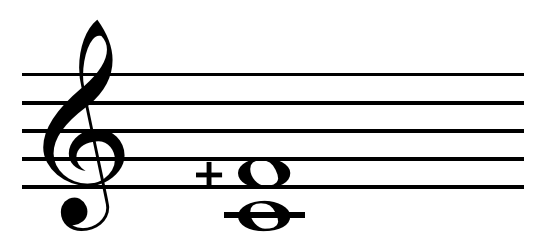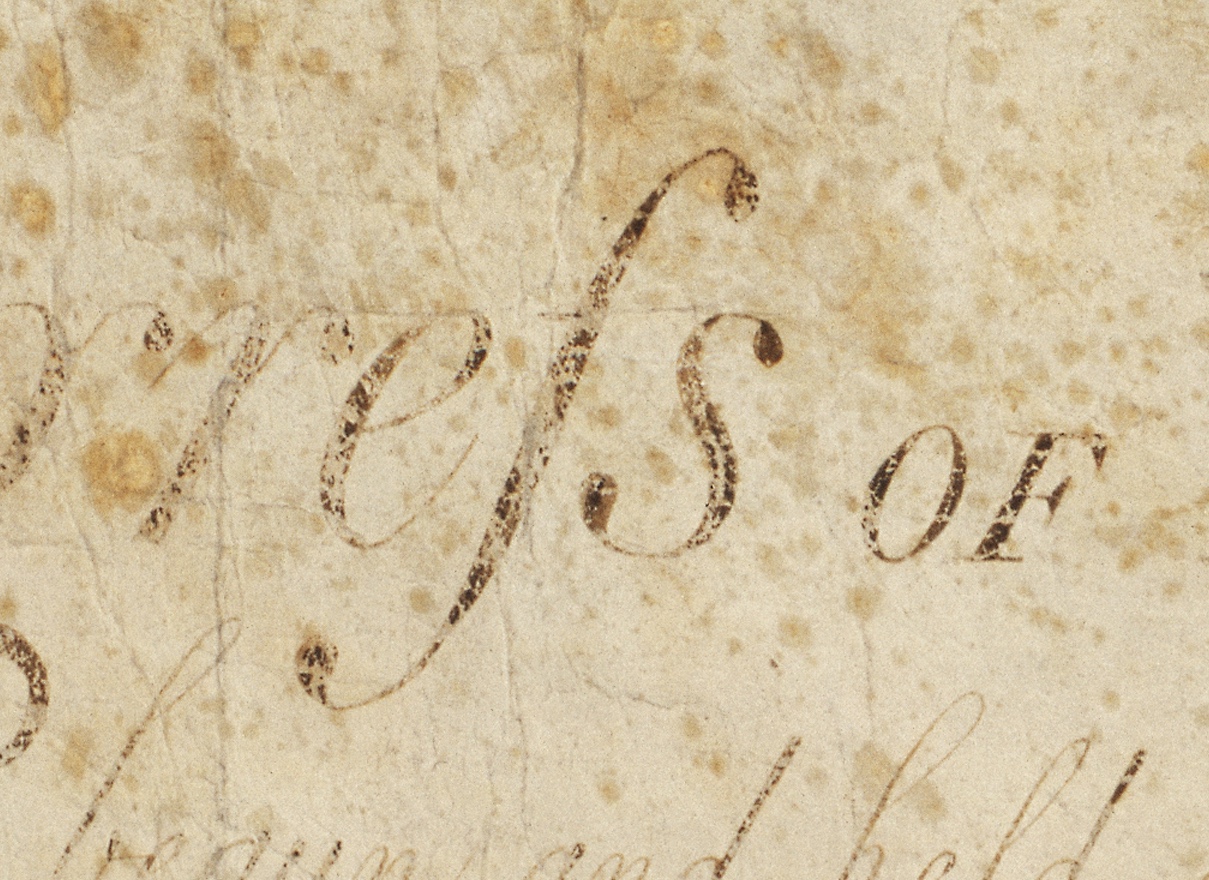|
F (pitch)
F+ is a musical pitch approximately 20 cents sharp of modern concert F (500 + 20 = 520 cents), and is primarily associated with the Northumbrian smallpipes. Similarly, composer Ben Johnston uses a "−" as an accidental to indicate a note is lowered 21.51 cents, or a "+" to indicate a note is raised 21.51 cents (which is the width of a syntonic comma In music theory, the syntonic comma, also known as the chromatic diesis, the Didymean comma, the Ptolemaic comma, or the diatonic comma is a small comma type interval between two musical notes, equal to the frequency ratio 81:80 (= 1.0125) .... Johnston, Ben and Gilmore, Bob (2006). "A Notation System for Extended Just Intonation" (2003), ''"Maximum clarity" and Other Writings on Music'', p. 78. . 498.04 + 21.51 = 519.55 (Just perfect fourth + syntonic comma = F+). See also * Augmented third References Northumbrian music Bagpiping Musical notes {{music-theory-stub ... [...More Info...] [...Related Items...] OR: [Wikipedia] [Google] [Baidu] |
Long S
The long s , also known as the medial s or initial s, is an archaism, archaic form of the lowercase letter . It replaced the single ''s'', or one or both of the letters ''s'' in a 'double ''s''' sequence (e.g., "ſinfulneſs" for "sinfulness" and "poſſeſs" or "poſseſs" for "possess"—but never asterisk#Ungrammaticality, *"poſſeſſ"). The modern letterform is known as the 'short', 'terminal', or 'round' s. In typography, it is known as a type of swash letter, commonly referred to as a "swash s". The long s is the basis of the first half of the grapheme of the German alphabet Orthographic ligature, ligature letter , (''eszett'' or [sharp s]). Rules This list of rules for the long s is not exhaustive, and it applies only to books printed during the 17th and 18th centuries in English-speaking countries. Similar rules exist for other European languages. * A round s is always used at the end of a word ending with s: "his", "complains", "ſucceſs" ** However, long s is m ... [...More Info...] [...Related Items...] OR: [Wikipedia] [Google] [Baidu] |
Latin Alphabet
The Latin alphabet or Roman alphabet is the collection of letters originally used by the ancient Romans to write the Latin language. Largely unaltered with the exception of extensions (such as diacritics), it used to write English and the other modern European languages. With modifications, it is also used for other alphabets, such as the Vietnamese alphabet. Its modern repertoire is standardised as the ISO basic Latin alphabet. Etymology The term ''Latin alphabet'' may refer to either the alphabet used to write Latin (as described in this article) or other alphabets based on the Latin script, which is the basic set of letters common to the various alphabets descended from the classical Latin alphabet, such as the English alphabet. These Latin-script alphabets may discard letters, like the Rotokas alphabet, or add new letters, like the Danish and Norwegian alphabets. Letter shapes have evolved over the centuries, including the development in Medieval Latin of lower-case, fo ... [...More Info...] [...Related Items...] OR: [Wikipedia] [Google] [Baidu] |
Digraph (orthography)
A digraph or digram (from the grc, δίς , "double" and , "to write") is a pair of characters used in the orthography of a language to write either a single phoneme (distinct sound), or a sequence of phonemes that does not correspond to the normal values of the two characters combined. Some digraphs represent phonemes that cannot be represented with a single character in the writing system of a language, like the English '' sh'' in ''ship'' and ''fish''. Other digraphs represent phonemes that can also be represented by single characters. A digraph that shares its pronunciation with a single character may be a relic from an earlier period of the language when the digraph had a different pronunciation, or may represent a distinction that is made only in certain dialects, like the English '' wh''. Some such digraphs are used for purely etymological reasons, like '' rh'' in English. Digraphs are used in some Romanization schemes, like the '' zh'' often used to represent the Ru ... [...More Info...] [...Related Items...] OR: [Wikipedia] [Google] [Baidu] |
Etruscan Civilization
The Etruscan civilization () was developed by a people of Etruria in ancient Italy with a common language and culture who formed a federation of city-states. After conquering adjacent lands, its territory covered, at its greatest extent, roughly what is now Tuscany, western Umbria, and northern Lazio, as well as what are now the Po Valley, Emilia-Romagna, south-eastern Lombardy, southern Veneto, and western Campania. The earliest evidence of a culture that is identifiably Etruscan dates from about 900BC. This is the period of the Iron Age Villanovan culture, considered to be the earliest phase of Etruscan civilization, which itself developed from the previous late Bronze Age Proto-Villanovan culture in the same region. Etruscan civilization endured until it was assimilated into Roman society. Assimilation began in the late 4thcenturyBC as a result of the Roman–Etruscan Wars; it accelerated with the grant of Roman citizenship in 90 BC, and became complete in 27 BC, when the Etr ... [...More Info...] [...Related Items...] OR: [Wikipedia] [Google] [Baidu] |
Etruscan Alphabet
The Etruscan alphabet was the alphabet used by the Etruscans, an ancient civilization of central and northern Italy, to write their language, from about 700 BC to sometime around 100 AD. The Etruscan alphabet derives from the Euboean alphabet used in the Greek colonies in southern Italy which belonged to the "western" ("red") type, the so-called Western Greek alphabet. Several Old Italic scripts, including the Latin alphabet, derived from it (or simultaneously with it). Origins The Etruscan alphabet originated as an adaptation of the Euboean alphabet used by the Euboean Greeks in their first colonies in Italy, the island of Pithekoussai and the city of Cumae in Campania. In the alphabets of the West, X had the sound value , Ψ stood for ; in Etruscan: X = , Ψ = or (Rix 202–209). The earliest known Etruscan '' abecedarium'' is inscribed on the frame of a wax tablet in ivory, measuring 8.8×5 cm, found at Marsiliana (near Grosseto, Tuscany). It dates from about 700 BC ... [...More Info...] [...Related Items...] OR: [Wikipedia] [Google] [Baidu] |
Digamma
Digamma or wau (uppercase: Ϝ, lowercase: ϝ, numeral: ϛ) is an archaic letter of the Greek alphabet. It originally stood for the sound but it has remained in use principally as a Greek numeral for 6. Whereas it was originally called ''waw'' or ''wau'', its most common appellation in classical Greek is ''digamma''; as a numeral, it was called ''episēmon'' during the Byzantine era and is now known as '' stigma'' after the Byzantine ligature combining σ-τ as ϛ. Digamma or wau was part of the original archaic Greek alphabet as initially adopted from Phoenician. Like its model, Phoenician waw, it represented the voiced labial-velar approximant and stood in the 6th position in the alphabet between epsilon and zeta. It is the consonantal doublet of the vowel letter upsilon (), which was also derived from waw but was placed near the end of the Greek alphabet. Digamma or wau is in turn the ancestor of the Latin letter F. As an alphabetic letter, it is attested in archaic a ... [...More Info...] [...Related Items...] OR: [Wikipedia] [Google] [Baidu] |
Upsilon
Upsilon (, ; uppercase Υ, lowercase υ; el, ''ýpsilon'' ) or ypsilon is the 20th letter of the Greek alphabet. In the system of Greek numerals, grc, Υʹ, label=none has a value of 400. It is derived from the Phoenician waw . Etymology The name of the letter was originally just "υ" (''y;'' also called ''hy'', hence "hyoid", meaning "shaped like the letter υ"), but the name changed to "υ ψιλόν" ''u psilon'' 'simple u' to distinguish it from οι, which had come to have the same pronunciation. Pronunciation In early Attic Greek (6th century BCE), it was pronounced (a close back rounded vowel like the English "long o͞o"). In Classical Greek, it was pronounced (a close front rounded vowel), at least until 1030. In Modern Greek, it is pronounced ; in the digraphs and , as or ; and in the digraph as . In ancient Greek, it occurred in both long and short versions, but Modern Greek does not have a length distinction. As an initial letter in Classical Gr ... [...More Info...] [...Related Items...] OR: [Wikipedia] [Google] [Baidu] |
Phoenician Alphabet
The Phoenician alphabet is an alphabet (more specifically, an abjad) known in modern times from the Canaanite and Aramaic inscriptions found across the Mediterranean region. The name comes from the Phoenician civilization. The Phoenician alphabet is also called the Early Linear script (in a Semitic languages, Semitic context, not connected to Minoan writing systems), because it is an early development of the Proto-Sinaitic script, Proto- or Old Canaanite or Proto-Sinaitic Writing system, script, into a Writing system#Graphic classification, linear, purely alphabetic script, also marking the transfer from a multi-directional writing system, where a variety of writing directions occurred, to a regulated horizontal, right-to-left script. Its immediate predecessor, the Proto-Canaanite, Old Canaanite or Proto-Sinaitic script, used in the final stages of the Late Bronze Age, first in either Egypt or Canaan and then in the Syro-Hittite states, Syro-Hittite kingdoms, is the oldest fully ... [...More Info...] [...Related Items...] OR: [Wikipedia] [Google] [Baidu] |
Egyptian Hieroglyph
Egyptian hieroglyphs (, ) were the formal writing system used in Ancient Egypt, used for writing the Egyptian language. Hieroglyphs combined logographic, syllabic and alphabetic elements, with some 1,000 distinct characters.There were about 1,000 graphemes in the Old Kingdom period, reduced to around 750 to 850 in the classical language of the Middle Kingdom, but inflated to the order of some 5,000 signs in the Ptolemaic period. Antonio Loprieno, ''Ancient Egyptian: A Linguistic Introduction'' (Cambridge: Cambridge UP, 1995), p. 12. Cursive hieroglyphs were used for religious literature on papyrus and wood. The later hieratic and demotic Egyptian scripts were derived from hieroglyphic writing, as was the Proto-Sinaitic script that later evolved into the Phoenician alphabet. Through the Phoenician alphabet's major child systems (the Greek and Aramaic scripts), the Egyptian hieroglyphic script is ancestral to the majority of scripts in modern use, most prominently the Latin and Cyr ... [...More Info...] [...Related Items...] OR: [Wikipedia] [Google] [Baidu] |
History Of The Alphabet
The history of the alphabet goes back to the conwriting system used for Semitic languages in the Levant in the 2nd millennium BCE. Most or nearly all alphabetic scripts used throughout the world today ultimately go back to this Semitic proto-alphabet. Its first origins can be traced back to a Proto-Sinaitic script developed in Ancient Egypt to represent the language of Semitic-speaking workers and slaves in Egypt. Unskilled in the complex hieroglyphic system used to write the Egyptian language, which required a large number of pictograms, they selected a small number of those commonly seen in their Egyptian surroundings to describe the sounds, as opposed to the semantic values, of their own Canaanite language. This script was partly influenced by the older Egyptian hieratic, a cursive script related to Egyptian hieroglyphs.Himelfarb, Elizabeth J.First Alphabet Found in Egypt, ''Archaeology'' 53, Issue 1 (Jan./Feb. 2000): 21. The Semitic alphabet became the ancestor of multiple ... [...More Info...] [...Related Items...] OR: [Wikipedia] [Google] [Baidu] |







